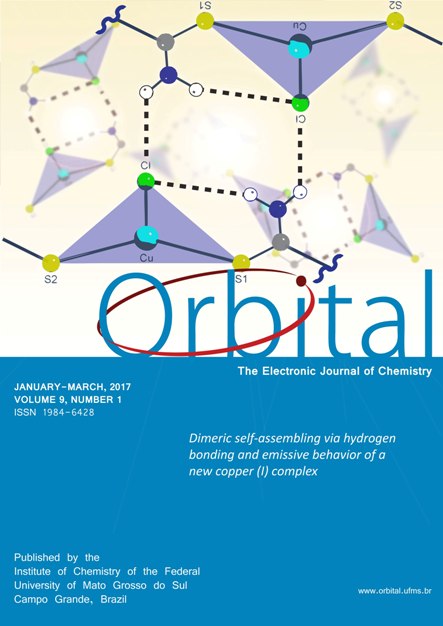- cell culture,
- controlled release system,
- cytotoxicity; insulin
Copyright (c) 2017 Orbital: The Electronic Journal of Chemistry

This work is licensed under a Creative Commons Attribution-NonCommercial-NoDerivatives 4.0 International License.
Abstract
Controlled release systems for insulin are frequent subjects of research, because it is rapidly degraded by proteolytic enzymes in the gastrointestinal tract and minimally absorbed after oral administration. Controlled release systems also provide significant contribution to its stability. Different techniques are used for the preparation of drug-loaded nanoparticles, and many novel techniques are being developed. The size and morphology of insulin-loaded nanoparticles may vary according to performed techniques, even if the same polymer is used. The aim of this study was to demonstrate the cytotoxicity of insulin loaded nanoparticles and the effect of various synthesis parameters on the particle size, polydispersity index (PdI), loading efficiency, and particle morphology. In the experiments, poly(lactic-co-glycolic acid) (PLGA) and insulin-loaded PLGA nanoparticles were prepared using the double emulsion (w/o/w) method. The characterization of the nanoparticles were performed with a UV spectrometer, the Zeta-sizer system, FTIR spectroscopy, and a scanning probe microscope. Cell toxicity of different concentrations was assayed with MTT methods on L929 fibroblast cells. The optimum size of the insulin-loaded PLGA nanoparticle was obtained with a 96.5% encapsulation efficiency, a 224.5 nm average particle size, and a 0.063 polydispersity index. This study obtained and characterized spherical morphology, determined that the nanoparticles have very low toxicity, and showed the effect of different parameters on particle size and polydispersity.
DOI: http://dx.doi.org/10.17807/orbital.v9i1.934

